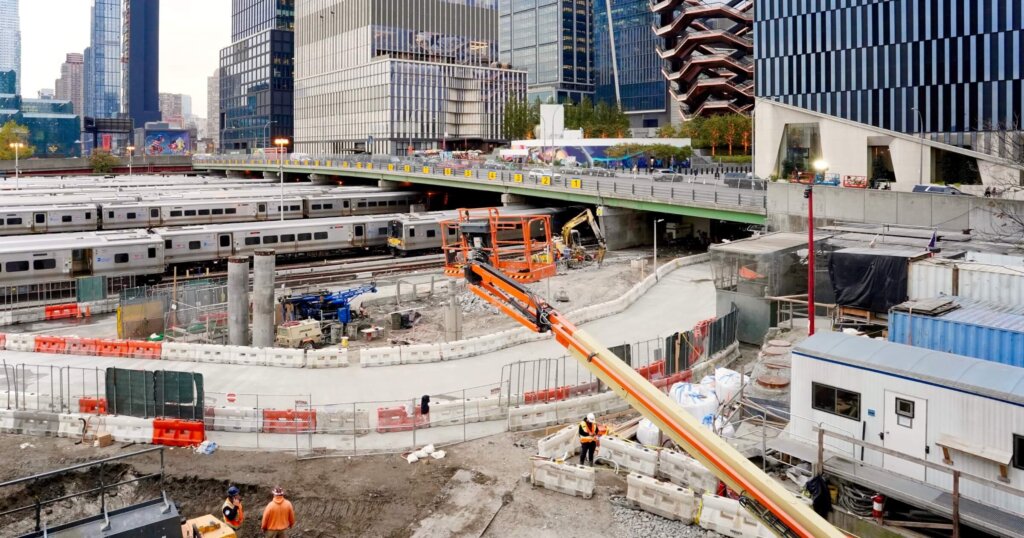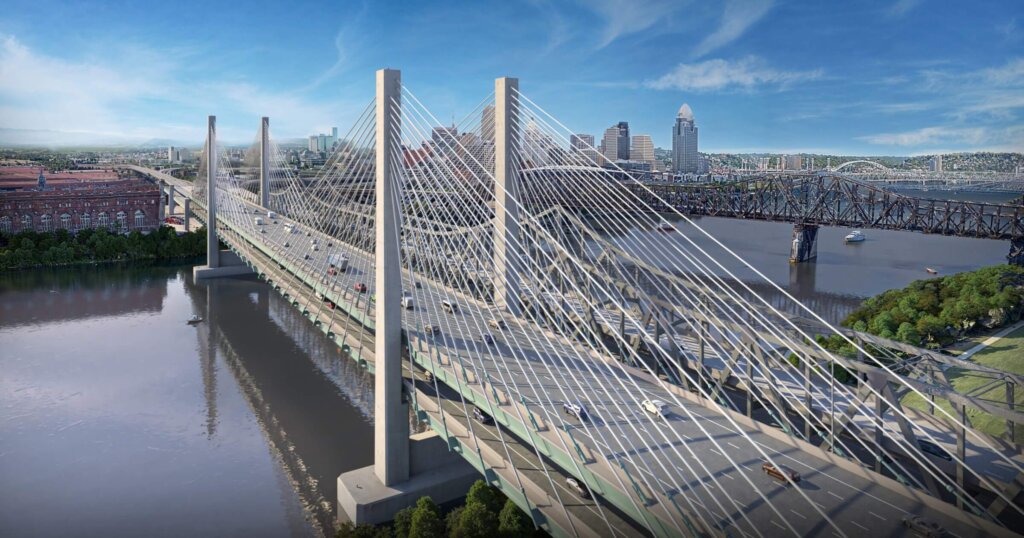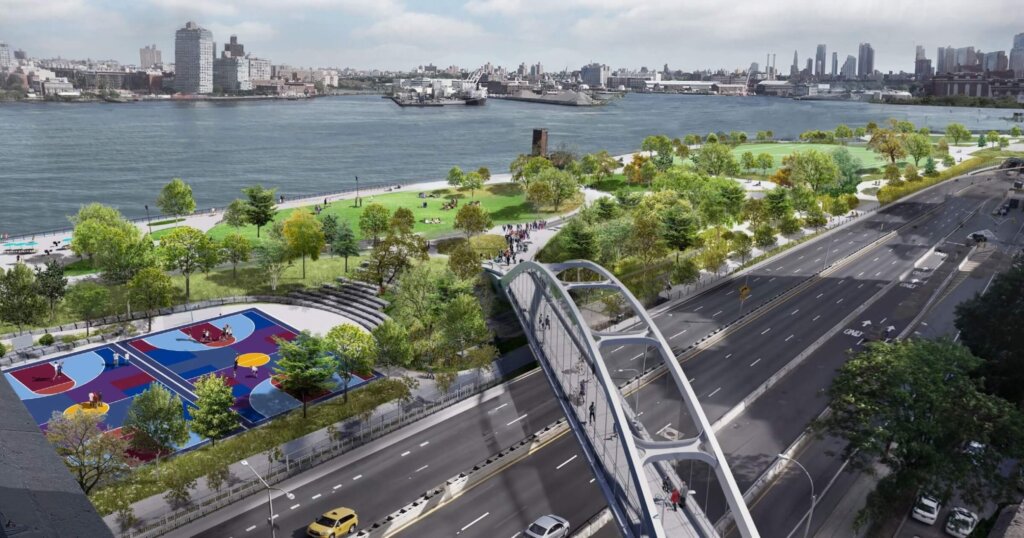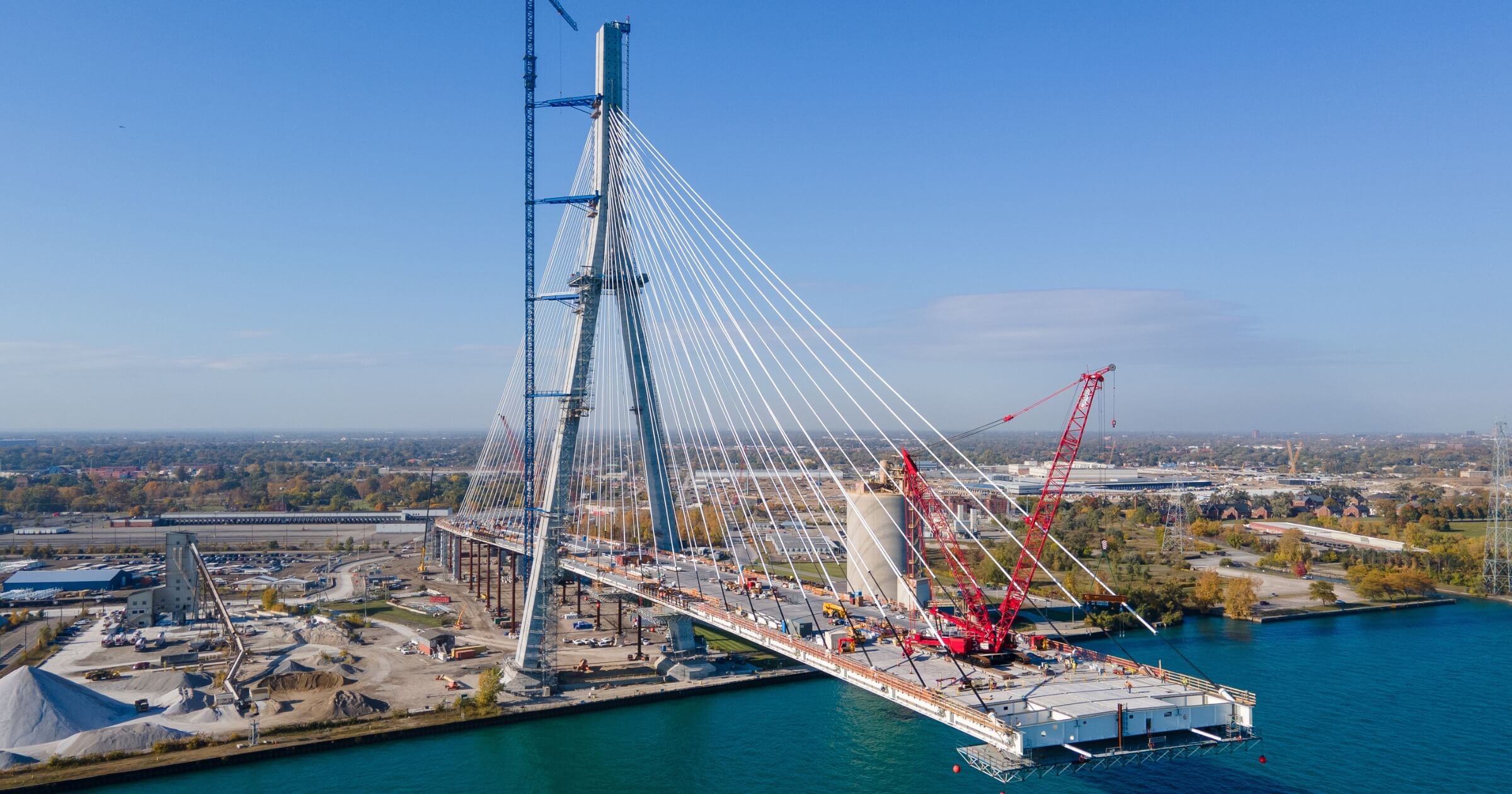Public infrastructure is booming across the United States right now, thanks to a major push from federal funding, climate resilience goals, and long-overdue upgrades. As cities and states work to repair aging systems and build for the future, some of the largest public infrastructure projects in the country are already underway. From new rail lines in California to flood protection systems in New York, these massive public works are reshaping how Americans live, move, and connect in 2025.
Major public infrastructure projects underway in the US
Project 1: California High-Speed Rail (Phase 1)

Photo courtesy of https://www.shutterstock.com/
Location: Central Valley, California
Size/specs: 500+ miles of rail (Merced to Bakersfield segment currently under construction)
Expected timeline: Estimated 2030 for Merced–Bakersfield; full buildout beyond 2035
The California High-Speed Rail is the first of its kind in the United States, an ambitious project that aims to connect major cities across the state with trains capable of traveling over 200 miles per hour. At the heart of the build is the Merced to Bakersfield segment, a 171-mile stretch running through the Central Valley, which broke ground in 2015 and has since become the most active part of the project. Construction includes more than 30 active sites, with massive viaducts, underpasses, and overpasses already taking shape.
The California High-Speed Rail project, led by the state’s rail authority, plays a big role in California’s efforts to cut emissions and invest in greener transportation. It’s also generating thousands of jobs and includes a strong focus on sustainability, with features like energy-efficient infrastructure and the use of recycled building materials. When complete, the high-speed rail line will help reduce travel times, alleviate congestion on state highways, and provide a low-emission alternative to flying or driving between cities such as San Francisco, Fresno, and Los Angeles.
Project 2: Gateway Program – Hudson River Tunnel Project

Photo courtesy of https://www.shutterstock.com/
Location: New York City / New Jersey
Size/specs: 2 new rail tunnels under the Hudson River, plus rehabilitation of existing 110-year-old tunnels
Expected timeline: New tunnel completion by 2035
The Gateway Program’s Hudson River Tunnel Project is one of the most important rail infrastructure efforts on the East Coast. It’s designed to ease a massive bottleneck along the Northeast Corridor, the country’s busiest passenger rail line, by adding two new tunnels under the Hudson River between New Jersey and New York City. These new twin tunnels will boost capacity, improve reliability for Amtrak and NJ Transit, and help modernize a system that millions rely on each year.
Built in 1910, the existing rail tunnels were seriously impacted by Hurricane Sandy and are long overdue for repairs. Once the new tunnels are finished, work will begin on restoring the old ones. The Gateway Development Commission is overseeing the project, which includes a range of environmental safeguards and engineering strategies aimed at improving safety, reducing flood risk, and keeping disruptions to surrounding neighborhoods to a minimum. With support from federal funding and local partnerships, the Hudson Tunnel Project is a long-awaited fix that strengthens transit infrastructure and keeps the region moving.
Project 3: Brent Spence Bridge Corridor Project

Image rendering courtesy of https://brentspencebridgecorridor.com/
Location: Cincinnati, Ohio / Covington, Kentucky
Size/specs: New companion bridge plus 8-mile corridor reconstruction
Expected timeline: 2029 completion
The Brent Spence Bridge Corridor Project is tackling one of the most notorious traffic chokepoints in the Midwest. Carrying both I-71 and I-75 over the Ohio River, the existing bridge has been operating at or above capacity for decades, resulting in daily congestion and safety concerns. This $3.6 billion project aims to change that by adding a new companion bridge and reconstructing an 8-mile stretch of highway through Cincinnati and Northern Kentucky.
Backed by federal infrastructure funding and managed by the Ohio and Kentucky Departments of Transportation, the new bridge will carry through traffic while the original structure will be reconfigured to handle local traffic. One important detail: the new bridge and highway improvements won’t include tolls, which is good news for everyday drivers and truckers who rely on the route. When it’s finished, the updated corridor should help ease traffic, keep freight moving more efficiently, and boost economic activity on both sides of the river.
Project 4: East Side Coastal Resiliency Project (ESCR)

Image rendering courtesy of https://www.akrf.com/
Location: Manhattan, New York
Size/specs: 2.4-mile flood protection system
Expected timeline: 2026
The East Side Coastal Resiliency Project is a major effort by New York City to protect Lower Manhattan from flooding and rising sea levels. Running 2.4 miles along the East River, from Montgomery Street up to East 25th Street, it’s part of the city’s broader plan to prepare for more extreme weather linked to climate change. Funded through a partnership between FEMA and the City of New York, it’s a major investment in long-term coastal protection.
Part of what makes this project unique is how it blends protection with public space, including lifting parks, updating playgrounds, and adding flood walls that function as seating and walkways. The idea is to keep the area both safe and usable for the community. Construction is happening in stages to limit disruptions, and once complete, it could set the standard for how cities rethink infrastructure in the face of climate change.
Project 5: Southwest Light Rail Transit (METRO Green Line Extension)

Photo courtesy of https://www.sambatek.com/
Location: Minneapolis–Saint Paul, Minnesota
Size/specs: 14.5 miles, 16 stations
Expected timeline: 2027
The METRO Green Line Extension, also known as the Southwest Light Rail Transit project, is the largest public infrastructure project currently underway in Minnesota. Spanning 14.5 miles and adding 16 new stations, this light rail line will link downtown Minneapolis to the growing southwest suburbs, including St. Louis Park, Hopkins, Minnetonka, and Eden Prairie. Once complete, it’s expected to serve thousands of daily riders and relieve congestion along some of the region’s busiest roadways.
Managed by Metro Transit and funded through a mix of federal, state, and local sources, the project includes extensive bridge work, tunnels, and utility relocation. Despite delays and rising costs, the build is considered vital for the region’s long-term growth and mobility. When finished, the extension will offer faster commutes, more transit options, and a direct connection to job centers, cultural hubs, and residential neighborhoods, making it a major step forward in regional transportation planning.
Project 6: Ship Canal Water Quality Project

Photo courtesy of https://www.webuildgroup.com/
Location: Seattle, Washington
Size/specs: 2.7-mile storage tunnel
Expected timeline: 2025
The Ship Canal Water Quality Project is one of Seattle’s biggest environmental infrastructure investments to date. This 2.7-mile underground tunnel is being built to collect and store stormwater and sewage during heavy rains, helping prevent untreated overflows from reaching Lake Union and Salmon Bay. Once complete, it will hold up to 29 million gallons of polluted runoff until it can be properly treated, significantly improving local water quality and protecting marine life.
Jointly managed by Seattle Public Utilities and King County, the $570 million project is being constructed using a tunnel boring machine named “MudHoney,” which has already completed its major tunneling work. The system also includes pump stations, odor control facilities, and above-ground green infrastructure, such as rain gardens. Slated to be operational by 2025, the project reflects a broader push toward smarter, more sustainable urban infrastructure that safeguards both the environment and public health.
Is public infrastructure construction growing in 2025?
Yes, and in a big way. Public infrastructure construction in the U.S. is surging in 2025, driven largely by massive federal investment and a renewed focus on climate resilience, modernization, and economic recovery. The Bipartisan Infrastructure Law (also known as the Infrastructure Investment and Jobs Act (IIJA)), signed in 2021, continues to funnel more than $1.2 trillion into critical sectors like roads, rail, bridges, public transit, water systems, and clean energy.
States and municipalities that once delayed upgrades due to budget constraints are now fast-tracking major builds. According to data from Dodge Construction Network, environmental public works starts rose 15.3% year-over-year through July 2025, with major growth in flood control and water infrastructure projects. The biggest gains have been seen in transportation and environmental projects, especially those focused on long-term sustainability, such as flood control systems and water infrastructure.
What to expect next in public infrastructure construction
The momentum behind public infrastructure isn’t slowing down anytime soon. As 2025 progresses, a new wave of large-scale projects is preparing to break ground, many of them focused on clean transportation, energy efficiency, and regional connectivity. One of the biggest projects to watch is the Brightline West high-speed rail line, which will link Las Vegas to Southern California and offer a fast, electric alternative to driving the I-15 corridor. Another key project is the I-5 Columbia River Bridge replacement, which will modernize a vital interstate crossing between Oregon and Washington.
Beyond those headline-makers, cities across the country are investing in electric bus depots, charging infrastructure, smart grids, and water system upgrades. Climate adaptation is playing a bigger role than ever, with more funding directed toward flood mitigation, fire resilience, and extreme weather protection. Thanks to federal support and growing public demand, the next chapter of U.S. infrastructure will likely be smarter, greener, and more inclusive.
Curious about other large-scale builds?
Explore more of what’s transforming the built environment across North America:
- See what’s in progress with solar energy projects currently under construction
- Dive into renewable energy projects reshaping power infrastructure
- Find out what’s happening in affordable housing construction projects
- Review the risks and lessons learned from deadliest construction projects
- Explore construction projects in British Columbia, 2025
Subscribe to our newsletter for insights on the biggest construction projects, industry trends, and innovations shaping the future of infrastructure.



